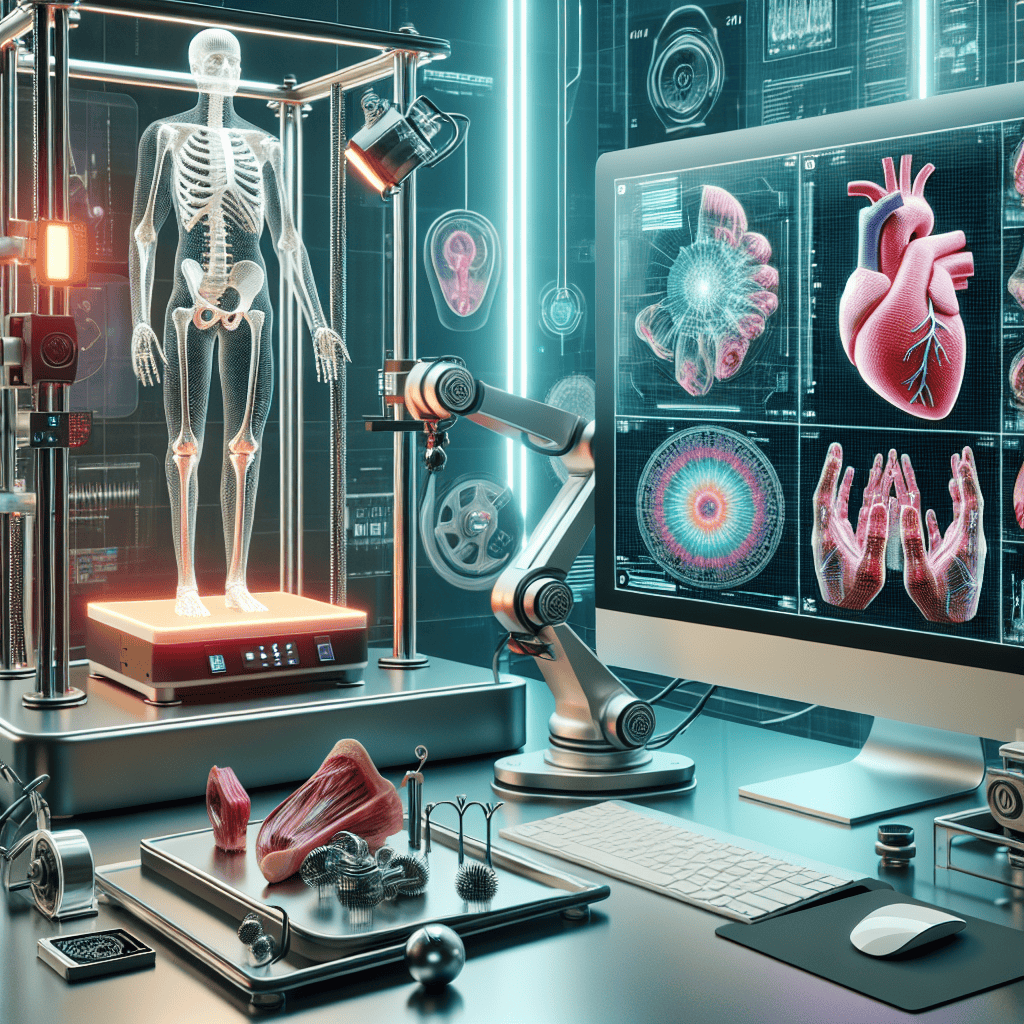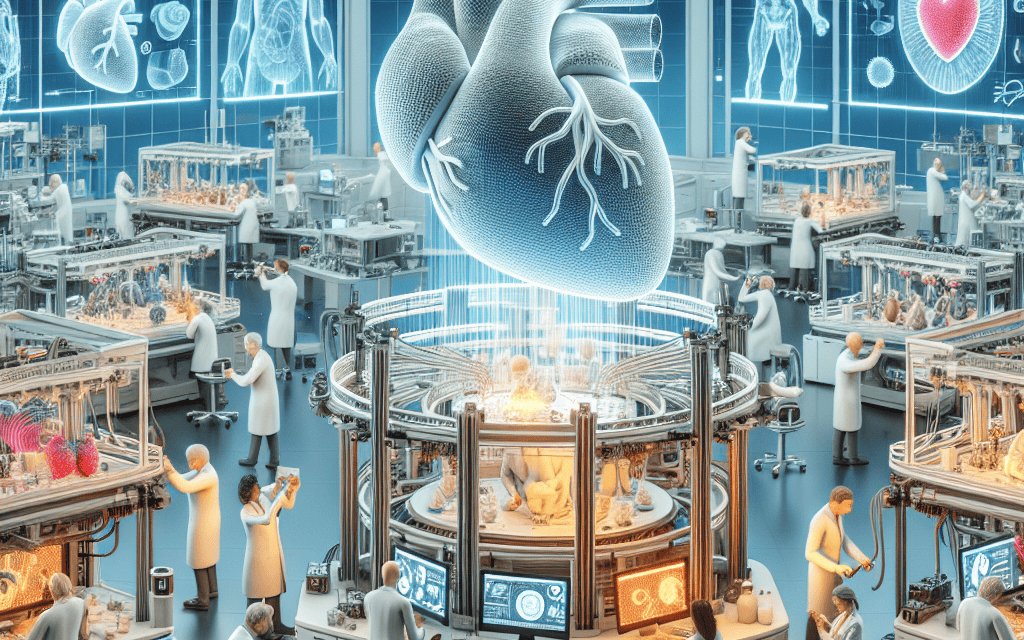-
Table of Contents
- The Advancements in 3D Printing for Prosthetics and Organ Models
- 1. The Evolution of 3D Printing in Prosthetics
- 1.1 Early Developments and Innovations
- 1.2 Customization and Personalization
- 1.3 Cost-Effectiveness and Accessibility
- 1.4 Enhancing Functionality and Aesthetics
- 1.5 Case Studies and Success Stories
- 2. The Role of 3D Printing in Organ Models
- 2.1 Advancements in Medical Education
- 2.2 Surgical Planning and Simulation
- 2.3 Development of Artificial Organs
- 2.4 Customization and Patient-Specific Solutions
The Advancements in 3D Printing for Prosthetics and Organ Models

In recent years, 3D printing has emerged as a revolutionary technology with the potential to transform various industries. Among its most promising applications are in the fields of prosthetics and organ modeling. This article delves into the advancements in 3D printing technology that are reshaping these areas, offering new hope and possibilities for patients and healthcare providers alike.
1. The Evolution of 3D Printing in Prosthetics
The journey of 3D printing in prosthetics has been marked by significant milestones that have progressively enhanced the quality of life for amputees. From the initial rudimentary designs to today’s highly sophisticated models, 3D printing has revolutionized the way prosthetics are designed, manufactured, and customized.
1.1 Early Developments and Innovations
The inception of 3D printing in prosthetics can be traced back to the early 2000s when researchers began experimenting with the technology to create basic prosthetic limbs. These early models were primarily focused on functionality, providing a cost-effective alternative to traditional prosthetics.
One of the pioneering projects was the Open Prosthetics Project, which aimed to create open-source designs for prosthetic limbs. This initiative laid the groundwork for future innovations by encouraging collaboration and knowledge sharing among researchers and engineers.
1.2 Customization and Personalization
One of the most significant advantages of 3D printing in prosthetics is the ability to customize and personalize each device to meet the unique needs of the user. Traditional prosthetics often require multiple fittings and adjustments, which can be time-consuming and costly. In contrast, 3D printing allows for precise customization based on the patient’s anatomy, resulting in a more comfortable and functional fit.
For instance, companies like e-NABLE have developed open-source designs that enable individuals to create personalized prosthetic hands. These designs can be easily modified to accommodate different sizes and preferences, empowering users to take control of their prosthetic solutions.
1.3 Cost-Effectiveness and Accessibility
Cost has always been a significant barrier to accessing prosthetic devices, particularly in low-income regions. Traditional prosthetics can cost thousands of dollars, making them unaffordable for many individuals. However, 3D printing has the potential to drastically reduce these costs by streamlining the manufacturing process and utilizing affordable materials.
Organizations like Not Impossible Labs have harnessed 3D printing technology to create low-cost prosthetic limbs for individuals in war-torn regions. Their “Project Daniel” initiative, for example, provided prosthetic arms to amputees in Sudan, demonstrating the transformative impact of affordable 3D-printed prosthetics.
1.4 Enhancing Functionality and Aesthetics
Beyond cost and customization, 3D printing has also enabled significant advancements in the functionality and aesthetics of prosthetic devices. Modern 3D-printed prosthetics can incorporate advanced features such as sensors, actuators, and even neural interfaces, allowing for more natural and intuitive movement.
Moreover, 3D printing allows for the creation of aesthetically pleasing designs that can be tailored to the user’s preferences. This aspect is particularly important for children and young adults, who may feel self-conscious about wearing traditional prosthetics. By offering a range of colors, patterns, and styles, 3D-printed prosthetics can help boost confidence and self-esteem.
1.5 Case Studies and Success Stories
Numerous case studies highlight the transformative impact of 3D printing in prosthetics. One notable example is the story of Alex Pring, a young boy born without a right arm. Through the collaborative efforts of volunteers and engineers, Alex received a 3D-printed prosthetic arm that not only restored his ability to perform daily tasks but also sparked his interest in engineering.
Another inspiring case is that of Hailey Dawson, a young girl with Poland syndrome who became the first person to throw out the first pitch at every Major League Baseball stadium using a 3D-printed prosthetic hand. Her story underscores the potential of 3D printing to empower individuals and break down barriers.
2. The Role of 3D Printing in Organ Models
While 3D printing has made significant strides in prosthetics, its impact on organ modeling is equally profound. The ability to create accurate and detailed organ models has revolutionized medical education, surgical planning, and even the development of artificial organs.
2.1 Advancements in Medical Education
Traditionally, medical students have relied on cadavers and two-dimensional images to study human anatomy. However, these methods have limitations in terms of availability, cost, and realism. 3D-printed organ models offer a more accessible and realistic alternative, allowing students to explore complex anatomical structures in a hands-on manner.
For example, the University of Michigan has developed a library of 3D-printed organ models that are used in medical education. These models provide students with a tangible understanding of anatomy, enhancing their learning experience and preparing them for real-world clinical scenarios.
2.2 Surgical Planning and Simulation
3D printing has also become an invaluable tool for surgical planning and simulation. Surgeons can create patient-specific organ models based on medical imaging data, allowing them to visualize and practice complex procedures before entering the operating room. This approach not only improves surgical outcomes but also reduces the risk of complications.
One notable example is the use of 3D-printed heart models in congenital heart defect surgeries. Surgeons at Boston Children’s Hospital have utilized these models to plan intricate procedures, resulting in improved precision and reduced operating times.
2.3 Development of Artificial Organs
Perhaps one of the most exciting applications of 3D printing in organ modeling is the development of artificial organs. Researchers are exploring the potential of bioprinting, a process that involves printing living cells to create functional tissue structures. While still in its early stages, bioprinting holds the promise of addressing the global shortage of organ donors.
In 2019, scientists at Tel Aviv University successfully printed a small-scale human heart using a patient’s own cells. Although not yet suitable for transplantation, this achievement represents a significant step toward the creation of fully functional artificial organs.
2.4 Customization and Patient-Specific Solutions
Similar to prosthetics, 3D printing allows for the customization of organ models to meet the specific needs of individual patients. This customization is particularly valuable in cases where anatomical variations or abnormalities are present, enabling healthcare providers to tailor their approach to each patient’s unique condition.
For instance, researchers at the University of Minnesota have developed 3D-printed models of the human brain to study neurological disorders. These models provide insights into the structural and functional aspects of the brain, facilitating the development of targeted treatments.





